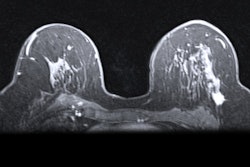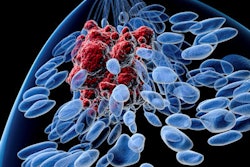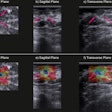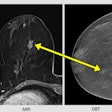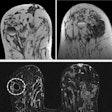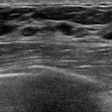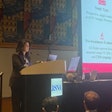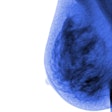
An abbreviated breast MR protocol represents a time-saving method with the same diagnostic potential as the standard protocol for characterizing breast lesions, according to Italian researchers. The abbreviated protocol can cut postprocessing time, they say.
Usually, abbreviated breast MRI protocols have focused on breast cancer screening. However, Dr. Michele Telegrafo, from the interdisciplinary department of medicine at the University of Bari Aldo Moro in Italy, and colleagues evaluated the diagnostic accuracy of an abbreviated MRI protocol for characterizing breast lesions. What they found is, yes, the abbreviated protocol is just as good as the standard one.
 Dr. Michele Telegrafo.
Dr. Michele Telegrafo.The abbreviated protocol consisted of short-tau inversion recovery (STIR), turbo-spin echo (TSE) T2-weighted imaging, precontrast T1-weighted imaging, and a single, intermediated, postcontrast T1-weighted sequence. The images were acquired with a 1.5-tesla system (Achieva, Philips Healthcare) before and after injection of contrast material. The abbreviated MR protocol took 10 minutes and the standard protocol took 16.
In their study, the researchers included 470 patients who underwent an MRI examination for different indications such as family history of breast cancer or a suspected breast lesion as detected by mammography or ultrasound. In case of positive MRI, the patient underwent ultrasound-guided biopsy. In the case of negative MRI, the patients were invited to restart periodic ultrasound examinations six months later.
The researchers found 185 mass-like lesions in 177 patients: 75 malignant and 110 benign lesions. The remaining 293 patients were negative at MRI.
Two experienced radiologists evaluated in consensus both standard and abbreviated protocols. Sensitivity, specificity, positive predictive value (PPV), negative predictive value (NPV), and diagnostic accuracy were calculated for both protocols using the histological findings as a reference standard and compared with McNemar's test. The MR images postprocessing and interpretation time were compared with paired t-test.
Telegrafo and colleagues found there was no statistically significant difference in sensitivity, specificity, diagnostic accuracy, PPV, or NPV in the two protocols.
| Protocol | Sensitivity | Specificity | Accuracy | PPV | NPV |
| Standard | 92% | 92% | 92% | 68% | 98% |
| Abbreviated | 89% | 91% | 91% | 64% | 98% |
The mean postprocessing and interpretation time were seven minutes and six minutes, respectively, for the standard protocol and one minute and two minutes, respectively, for the abbreviated protocol with a statistically significant difference (p < 0.01), Telegrafo said in a presentation at ECR 2016.
"An abbreviated MRI protocol had the same diagnostic potentials as the standard one for characterizing breast lesion and could be used for MRI breast lesion characterization representing a time-saving tool in terms of image acquisition and interpretation," he said.
The study does have some limitations, however, namely the small number of patients and the retrospective nature of the study. Other limitations included the different indications to process MRI and a six-month follow-up in case of negative MRI, as well as a lack of interobserver agreement evaluation, he said.




